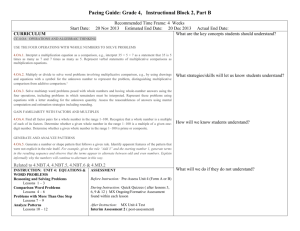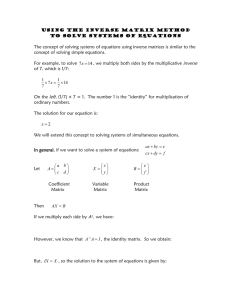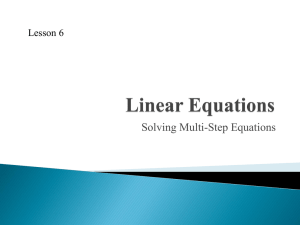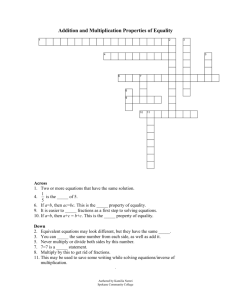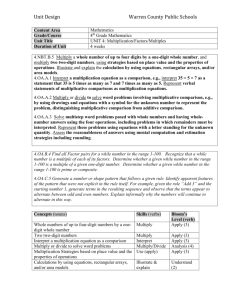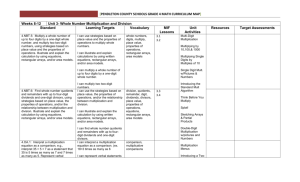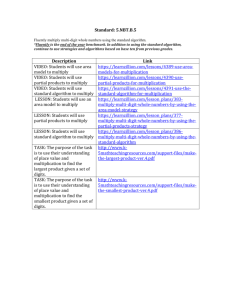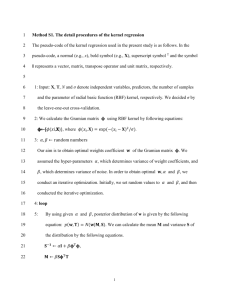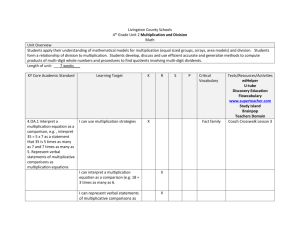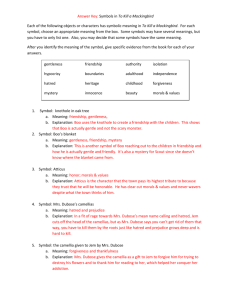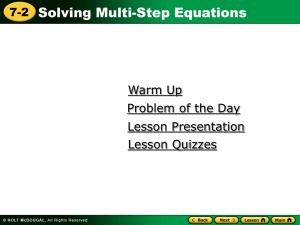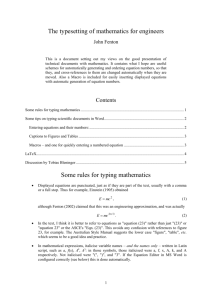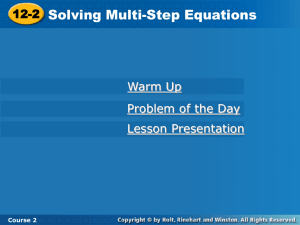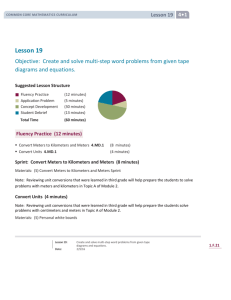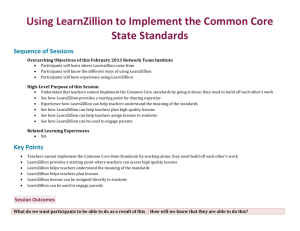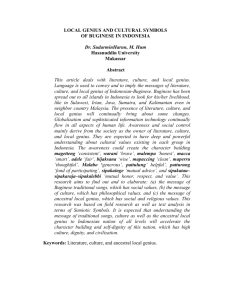Unit_3_Parent_Guide
advertisement
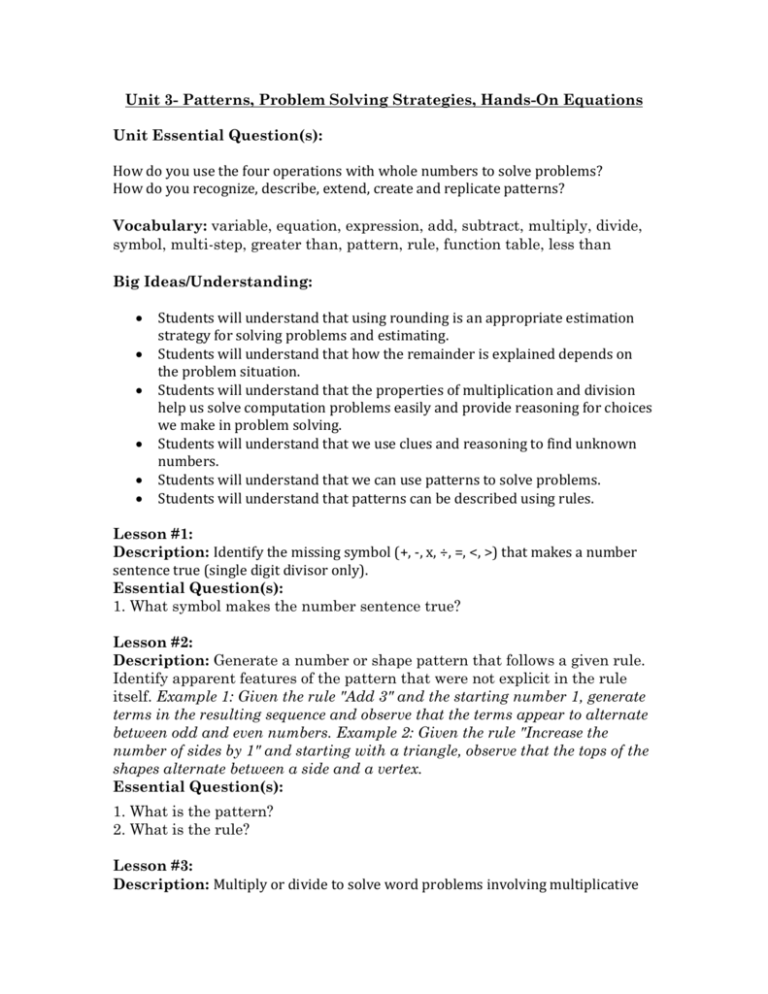
Unit 3- Patterns, Problem Solving Strategies, Hands-On Equations Unit Essential Question(s): How do you use the four operations with whole numbers to solve problems? How do you recognize, describe, extend, create and replicate patterns? Vocabulary: variable, equation, expression, add, subtract, multiply, divide, symbol, multi-step, greater than, pattern, rule, function table, less than Big Ideas/Understanding: Students will understand that using rounding is an appropriate estimation strategy for solving problems and estimating. Students will understand that how the remainder is explained depends on the problem situation. Students will understand that the properties of multiplication and division help us solve computation problems easily and provide reasoning for choices we make in problem solving. Students will understand that we use clues and reasoning to find unknown numbers. Students will understand that we can use patterns to solve problems. Students will understand that patterns can be described using rules. Lesson #1: Description: Identify the missing symbol (+, -, x, ÷, =, <, >) that makes a number sentence true (single digit divisor only). Essential Question(s): 1. What symbol makes the number sentence true? Lesson #2: Description: Generate a number or shape pattern that follows a given rule. Identify apparent features of the pattern that were not explicit in the rule itself. Example 1: Given the rule "Add 3" and the starting number 1, generate terms in the resulting sequence and observe that the terms appear to alternate between odd and even numbers. Example 2: Given the rule "Increase the number of sides by 1" and starting with a triangle, observe that the tops of the shapes alternate between a side and a vertex. Essential Question(s): 1. What is the pattern? 2. What is the rule? Lesson #3: Description: Multiply or divide to solve word problems involving multiplicative comparison, distinguishing multiplicative comparison from additive comparison. Example: Know that 3 x 4 can be used to represent that Student A has 4 objects and Student B has 3 times as many objects, and not just 3 more objects. Essential Question(s): 1. How do you use multiplication and division to solve word problems? Lesson #4: Description: Determine the rule for a function given a table "Limit to +, -, x; whole numbers." Essential Question(s): 1. What is the rule for the function table? Lesson #5: Description: Determine the missing elements in a function table "Limit to +, -, or x; and to whole numbers or money." Essential Question(s): 1. What is the missing number? Lesson #6: Description: Represent word problems using equations with a symbol or letter standing for the unknown quanitity. Essential Question(s): 1. How would you use an equation with a variable to solve the word problem? Lesson #7: Description: Solve multi-step word problems posed with whole numbers using the four operations. Answers will be either whole numbers or have remainders that must be interpreted yielding a final answer that is a whole number. Represent these problems using equations with a symbol or letter standing for the unknown quantity. Essential Question(s): 1. Using the four operations, what strategies would you use to solve multi-step word problems? Web Based Resources: http://learnzillion.com www.mathworksheetland.com http://learnzillion.com http://commoncoresheets.com/
